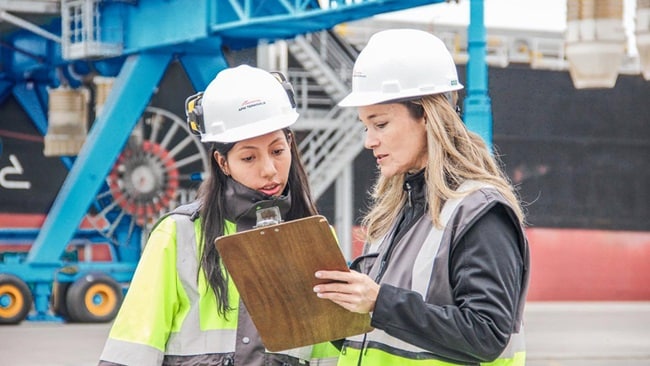India stands as a burgeoning production hub, witnessing exponential growth across diverse sectors. A leading exporter, the country boasts a formidable portfolio encompassing machine equipment, petroleum products, jewellery, iron, and steel, alongside a prominent presence in pharmaceuticals, chemicals, and vegetables. These commodities are exported across the globe, to markets in the Middle East, Europe, Africa, and the Americas.
Recent data from Eximpedia for the year 2024 reveals India's substantial contributions to global commerce, with exports valued at $5.9 billion in pharmaceuticals, $4.9 billion in organic and inorganic chemicals, and $2.4 billion in dairy products. Further, the 2024 World Population Review underscores India's agricultural prowess, ranking it as the world's second-largest vegetable producer, leading in banana cultivation and rice exports.
A common thread binds these diverse exports together, their reliance on cold chain logistics to maintain optimal quality and minimise losses from spoilage. Given the critical role of goods like pharmaceuticals, sensitive chemicals, dairy, and meat products, and perishable vegetables in driving India's economic engine, stringent temperature control emerges as a linchpin in ensuring seamless supply chain operations.
Nevertheless, Indian cold chain logistics is still in its infancy and grapples with a significant challenge – fragmentation. The logistics landscape still faces disruptions stemming from organizational inefficiencies, a dearth of specialized knowledge, and limited visibility into cargo movements. This fragmentation poses a formidable hurdle in the path toward achieving robust and efficient cold chain logistics systems, essential for sustaining India's position as a global export powerhouse.
According to a study by Mordor Intelligence, India’s cold chain logistics market is expected to reach $11.64 billion in 2024 and grow to $18.19 billion by 2029. The key reason for the steady growth is a rise in demand for perishable goods, both domestically and internationally, driven by e-commerce.
However, for the country’s logistics industry to support this growth, there is a dire need to invest in innovative cold chain warehousing and transportation.
While India’s perishable exports are significant, inefficient cold chain operations result in significant losses. The Food & Agriculture Organization stated that globally, about 1.3 billion tonnes of food is lost, amounting to economic losses as high as $8-15 billion per annum. A study conducted by the ICAR-Central Institute of Post-Harvest Engineering & Technology (CIPHET) notes that in India, for fruits and vegetables, the post-harvest losses range from 4.58 to 15.88%.
Similarly, the pharma industry, which also depends on an efficient cold supply chain network, faces significant losses due to poor storage and disrupted transportation of sensitive drugs, vaccines, and other raw materials. “Patients heavily depend on the pharmaceutical company's reputation since they lack the ability to evaluate the integrity of the pharmaceuticals beyond their appearance and packaging. A drug’s effectiveness can be jeopardized by temperature variations during storage and transit, even if it seems to be properly packaged and branded,” explained Dr Rajiv Desai, Senior Technical Advisor, Indian Pharmaceutical Alliance, during a recent ETPharma’s Future-Ready Pharma Supply Chain Summit held in Mumbai.
What’s stalling India’s cold chain logistics growth?
Infrastructure deficiency: Over 90% of India's cold chain logistics sector is fragmented and privately owned, lacking standardization. Many regions suffer from inadequate cold chain facilities, hindering the fulfilment of local market demands. Furthermore, inconsistencies in quality leave certain cold stores ill-equipped to handle specific commodity requirements. Reefer vehicles, essential for transporting perishable goods, are in short supply and prone to breakdowns, leading to substantial losses and inventory disruptions.
Escalating fuel costs: India grapples with elevated fuel prices compared to global counterparts like the US, Australia, and Japan, as well as neighbouring countries such as Pakistan and Bangladesh. Since fuel constitutes a substantial portion of operating expenses for cold storage facilities and temperature-controlled transportation, the overall expenses of cold chain logistics in India soar higher than in other nations.
Power supply disruptions: India's reliance on coal for electricity generation, coupled with coal shortages, triggers frequent and widespread power outages, particularly in industrial zones, tier-2 cities, and rural areas. These outages jeopardize the functioning of cooling systems in warehouses, leading to equipment malfunctions. Beyond maintenance expenses, power disruptions foster microbial growth, risking contamination of stored goods.
Manual processes: Despite advancements in technology, sectors like logistics in India remain sluggish in embracing innovation, relying heavily on manual interventions to manage cold chain cargo and regulate storage temperatures. This reliance on manual labour increases the likelihood of errors. Moreover, operating cold chain equipment demands specialized expertise, yet due to the sector's disorganized nature, logistics firms often are slow to invest in trained professionals for equipment operation and maintenance.
Regulatory hurdles: Government regulations and local bureaucratic processes also impede the efficiency of cold chain logistics. Bureaucratic delays, insufficient inspections, and complex red tape further exacerbates challenges, affecting cold chain timelines and allowing damaged goods to slip through. Subsequently, such compromised products may trigger increased recalls or, in critical cases such as pharmaceuticals, pose severe health risks to consumers.
Driving growth of cold chain logistics in India
Improving cold chain logistics in India requires a comprehensive approach addressing various aspects including infrastructure, technology adoption, regulatory reforms, and skill development. Here are some strategies:
- Infrastructure development: Logistics companies in India need to invest in building standardized cold storage facilities across different regions to meet the demands of local markets. There needs to be an impetus for private and public partnerships to expand and modernize the cold chain infrastructure and establish cold chain facilities in underserved areas.
- Technology integration: Innovation is the key to a seamless cold chain that is less susceptible to disruptions. Logistics service providers can adopt cold chain management software for real-time monitoring of temperature, humidity, and location of goods. IoT (Internet of Things) devices and sensors to ensure proper handling and tracking of perishable goods throughout the supply chain can ensure less wastage due to damage and improve time to market. Blockchain technologies allow cold chain customers access to transparent and secure record-keeping of cold chain transactions and help them keep track of their inventory.
- Energy efficiency and renewable energy: India’s climate provides ample opportunity for the use of renewable energy like solar power and wind power to run cold chain warehouses and mobile storage facilities. Renewable energy sources mitigate the impact of power shortages on cold chain operations. Additionally, switching to alternative transportation like electric trucks can also reduce long-term costs as well as greenhouse gas emissions.
- Skill development and training: Specialized training programs for cold chain professionals can help enhance their technical expertise in operating and maintaining refrigeration equipment. Logistics companies can partner with educational institutions and industry associations to develop curriculum and certification programs focused on cold chain logistics.
- Regulatory reforms: The Government of India has taken measures to improve cold chain infrastructure, from providing various agri schemes to set up integrated and complete cold chain facilities, to encouraging private participation through subsidies, loans, and grants. Regulatory processes also need to be streamlined to reduce bureaucratic delays and corruption in obtaining permits and approvals for cold chain operations. Regulatory bodies need to adopt stringent quality standards and regular inspections to ensure compliance with food safety regulations and prevent the circulation of substandard products in the cold chain.
- Collaborative initiatives: By facilitating collaboration among stakeholders including government agencies, logistics companies, cold chain operators, and technology providers, businesses can address common cold chain challenges and foster innovation. Industry alliances can support the exchange of best practices, data, and resources for optimising cold chain logistics operations nationwide.
- Integrated cold chain: A successful cold chain is reliant on seamless movement of cargo, without disruption to the temperature of the goods. This means having a stable environment for the cargo from the time it is packaged, through its transportation and warehousing, right till it reaches its end customer. With a single logistics partner to manage the cold chain from end to end, businesses can ensure the quality of goods by eliminating redundancies and inefficiencies, streamlining processes, and reducing lead times.
By implementing these strategies in a coordinated manner, India can significantly enhance the efficiency, reliability, and safety of its cold chain logistics network, ultimately benefiting businesses, consumers, and the overall economy.
未来,您想随时了解必读行业趋势吗?
您已经完成了,欢迎“登船”!
很抱歉,发送您的联系请求时出现问题。
请查看表单字段,确保所有已正确填写所有必填信息。如果问题仍然存在,请联系我们的支持团队以获得进一步的帮助。
未来,您想随时了解必读行业趋势吗?
使用此表格注册,即可直接在您的邮箱中接收我们的洞察见解,进入一个真正的综合物流世界。简单操作,即从我们为您量身定做的精选文章中获得启发,了解相关行业洞察信息。您可以随时取消订阅。
I agree to receive logistics related news and marketing updates by email, phone, messaging services (e.g. WhatsApp) and other digital platforms, including but not limited to social media (e.g., LinkedIn) from A. P. Moller-Maersk and its affiliated companies (see latest company overview). I understand that I can opt out of such Maersk communications at any time by clicking the unsubscribe link. To see how we use your personal data, please read our Privacy Notification.
By completing this form, you confirm that you agree to the use of your personal data by Maersk as described in our Privacy Notification.












